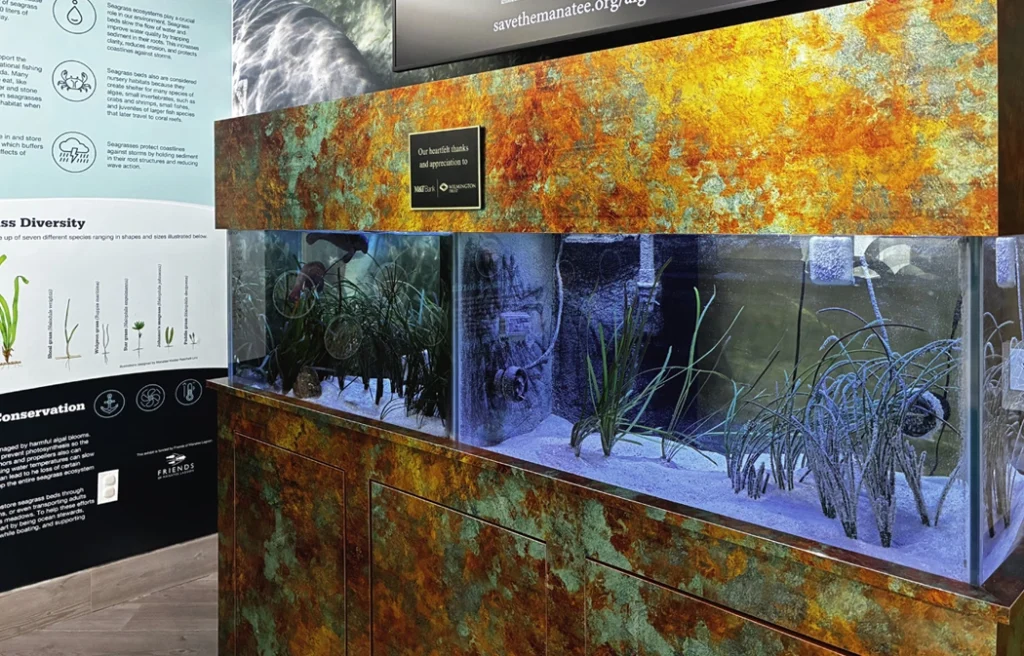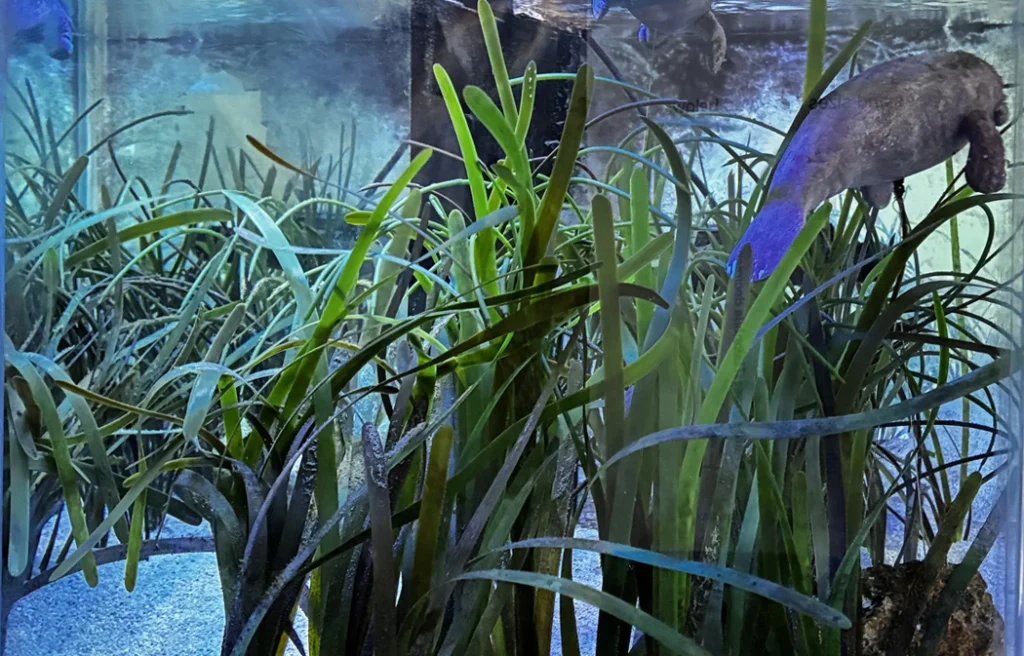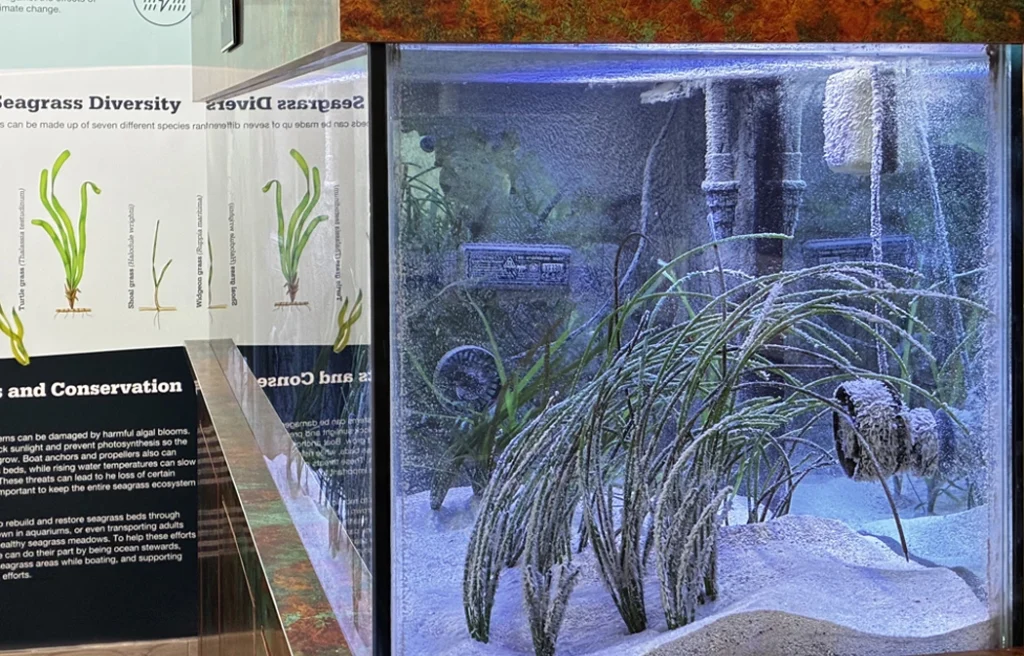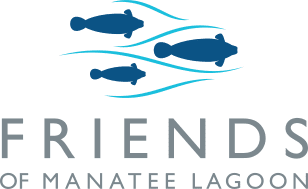Thanks to the generous support of M&T Bank & Wilmington Trust, there is a newly installed wave-activated seagrass aquarium at Manatee Lagoon.
The importance of Seagrass beds:
- Supporting biodiversity: Seagrass beds are home to a diverse range of marine life, including fish, invertebrates, and mammals. They provide food and shelter for these organisms and help to regulate the water quality in their habitats.
- Providing nursery grounds: Seagrass beds are crucial nursery grounds for many fish species. Juvenile fish are safe from predators in the seagrass beds and can grow and develop in a healthy environment.
- Filtering water: Seagrass beds help to filter water by removing pollutants and sediments. This improves water quality and makes it more suitable for marine life.
- Protecting shorelines: Seagrass beds help to protect shorelines from erosion by absorbing wave energy. This can help prevent flooding and damage to coastal infrastructure.
- Storing carbon: Seagrass beds are important carbon sinks, meaning that they absorb carbon dioxide from the atmosphere. This helps to mitigate climate change.
In Florida, seagrass beds provide food and shelter for over 600 species of marine life, including the endangered manatees and sea turtles. Visit Manatee Lagoon to learn more about the importance of seagrass for healthy ecosystems. https://www.visitmanateelagoon.com/visit



Thanks to the generous support of M&T Bank & Wilmington Trust, there is a newly installed wave-activated seagrass aquarium at Manatee Lagoon.
How can you support our seagrass education programs?
Come along with us on this adventure. We welcome your donations to help us cover the costs involved with these important seagrass education and restoration programs.
Donations can be made in a variety of ways.
Thank you for your support!

